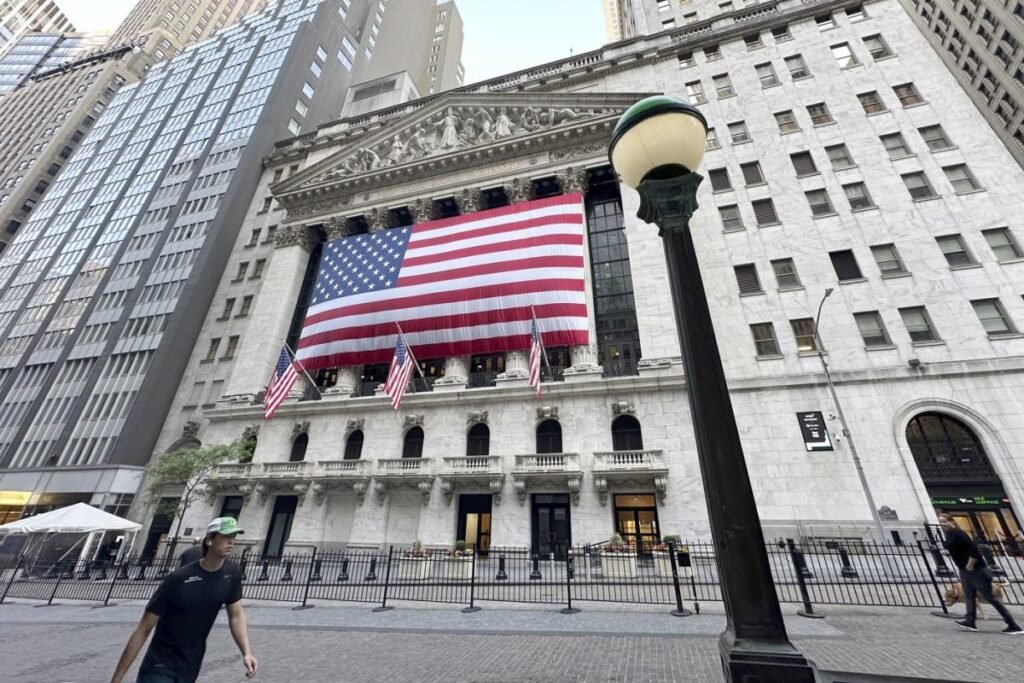Wall Street stocks gave up early gains and were slightly lower in afternoon trading Friday after a notable report showed inflation continuing to ease.
Investors are hoping that subdued inflation will prompt the Federal Reserve to start cutting interest rates, which are at their highest in more than two decades.
The S&P 500 index was down 0.1% and is hovering near a record high, on track to snap a fourth straight week of gains. The Nasdaq Composite index was down 0.1% and is hovering near a record high.
The Dow Jones Industrial Average was down 52 points, or 0.1%, as of 1:54 p.m. Eastern time.
Consumer prices rose 2.6% year-on-year in May, according to the latest personal consumption expenditures index, or PCE, signaling a continued easing from April’s 2.7% increase and well below the 7.1% peak two years ago.
“Things are moving in the right direction, which is what the Fed needs to decide to cut rates,” said Quincy Krosby, chief global strategist at LPL Financial.
PCE is the Fed’s preferred inflation gauge, and the latest reading is encouraging to economists and investors who expect interest rate cuts to ease pressure on markets and borrowers. Wall Street expects the Fed to start cutting rates when it meets in September.
Treasury yields were mixed in the bond market after initially falling following the latest signal of easing inflation. The 10-year Treasury yield, which influences interest rates on mortgages and other consumer loans, rose to 4.35% from 4.30% just before the PCE data was released. The 2-year Treasury yield, which more accurately reflects expectations of the Fed’s actions, was stable at 4.72% from just before the data was released.
The Federal Reserve has raised interest rates to their highest level in more than two decades to keep inflation at its 2% target, and other inflation measures, such as the well-known Consumer Price Index, also confirm that price pressures are easing.
Consumers are still feeling the pressure of inflation, even though it has eased significantly from its peak, and recent data suggests spending is weakening, weighing on economic growth. The Fed’s goal has been to slow economic growth enough to tame inflation, but not so much that it would tip the economy into a recession.
“The combination of lower inflation and more cautious consumers’ spending patterns has the market perceiving a rate cut as likely in September,” Crosby said.
A strong job market, another big driver of economic growth, is showing signs of weakening, with Wall Street due to release updates on job openings, the unemployment rate and employment next week.
Nike Inc., the footwear and sportswear maker, fell 20.2%, the biggest drop among S&P 500 stocks, after it missed Wall Street’s sales targets and lowered its full-year revenue forecast. Company executives said they expect a single-digit sales decline this fiscal year, citing a “challenging” environment.
Nike’s bleak outlook also dragged down shares of other sports apparel companies, with Foot Locker down 4%, Skechers down 1% and Under Armour down 3%.
More retailers, especially those focused on discretionary goods, are warning of a slowdown in consumer spending. The latest government retail sales report showed consumers spent barely more in May than they did in April.
Gains in technology and financial stocks helped limit losses in the S&P 500. Salesforce rose 2.4% and JPMorgan Chase added 1.3%.
___
AP Business Writers Yuri Kageyama and Matt Ott contributed to this report.
Damien J. Troise And Alex Veiga, The Associated Press

